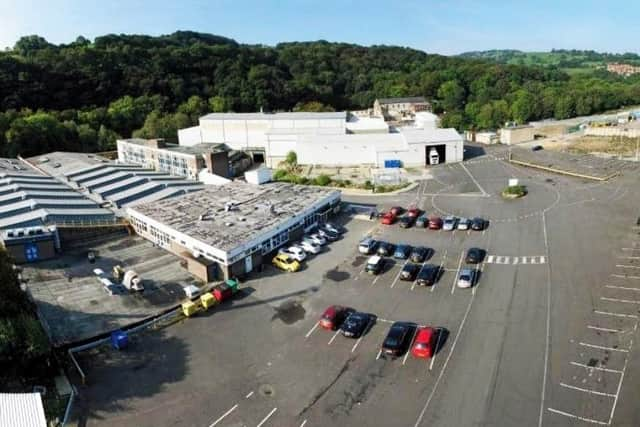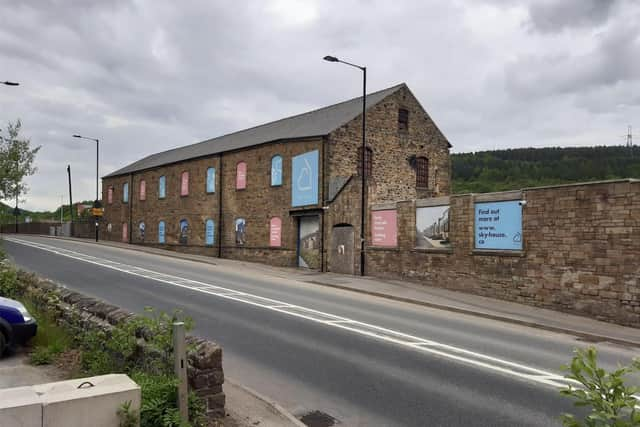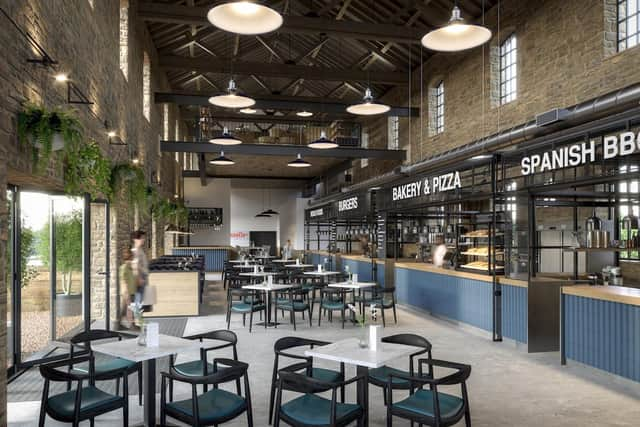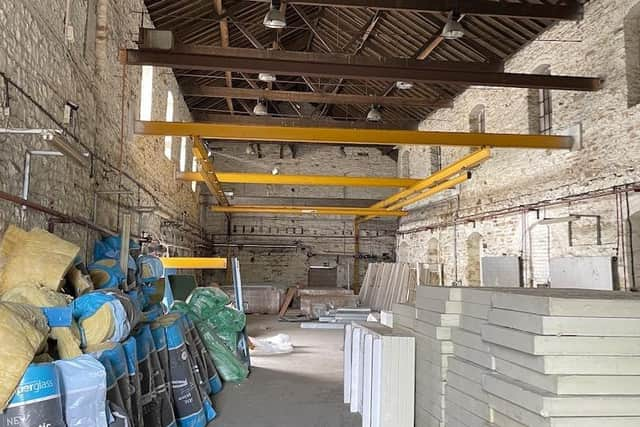Restorations - Historic scrap of giant paper mill in Oughtibridge near Sheffield to become food hall
and live on Freeview channel 276
With no listed buildings on the 110-acre site between Oughtibridge and Wharncliffe Side, demolition after operations ended in 2015 could have erased all trace of generations of activity.
At that time, huge warehouses jockeyed for space with older buildings made of brick and stone.


Advertisement
Hide AdAdvertisement
Hide AdBut just two remained when housebuilders got going last year, clinging on to the very edge of the site by the main road, Langsett Road North.
Who will run the food hall?
Sheffield builders Sky-House Co could have flattened them too – but turned them into a selling point instead.
Dilapidated cottages from 1880 have been converted into a house and four flats, while an old warehouse from the same period is set to become a food hall run by entrepreneurs Matt and Nina Bigland – the brains behind Neepsend’s pioneering Cutlery Works and the forthcoming Cambridge Street Collective food hall in Sheffield’s Heart of the City development – along with Luke and Stacey French of Joro restaurant.


BUSINESS NEWS: Sad pictures inside John Lewis
Mr Bigland said it was too early to comment, but Sky-House says it will be ready in just six months.
Advertisement
Hide AdAdvertisement
Hide AdComputer images show several food outlets, including a bakery, arranged around seating, with a large outside balcony and a food shop upstairs.
Matt Yates, Sky-House sales manager, said the building was ‘pretty good’ structurally and dry inside. Several bricked up arched windows, peeling areas of paint and signs of an extension, now gone, point to its former use.


He said: “The original plan was to turn it into apartments but we thought it would be over development and we wanted to offer something back to the local community while keeping some history.
“It is an industrial building designed to be functional. Its beauty comes from its history and original features.”
What about the risk of flooding?
Advertisement
Hide AdAdvertisement
Hide AdThe warehouse has also inspired the company’s 40 new-build homes which will stand nearby, he added. Stone-built, some have factory-style saw-tooth roofs and zinc cladding designed to look better with age and tie in with the appearance of the older structures.


The River Don flows through the site and in 2007 devastating floods led to the end of paper production.
Sky-House has raised the height of its building plot by as much as 32 feet in places, Mr Yates said, taking it from a flood zone one, where no building is permitted, to a flood zone three, which is supposed to have a one-in-1,000 year probability of being inundated.
It is possible to fish off the balconies of the homes closest to the water, but ‘three named storms’ in five days in February fell short of causing flooding and gave buyers ‘a lot of confidence’, he added.
Advertisement
Hide AdAdvertisement
Hide AdAll three by the river – and 19 of the total – have sold, which was ‘way ahead of expectations’.
What is else is going on the site?


On the rest of the site, David Wilson is building 150 homes and Barratt 30.
Bradfield Parish Council produced a history of Oughtibridge Paper Mill, or to give it its official name, Spring Grove Paper Mill, which opened in 1834 and was operated by Marsh Brothers.
Papermaking was an important local industry. Of 16 mills in Sheffield, six were in Bradfield Parish.
Advertisement
Hide AdAdvertisement
Hide AdThe demand for paper came from the local metal trades which needed tissue paper for wrapping plate and silverware.
Toolmakers needed oiled paper, and both had the need for coarse brown paper.
The rivers Loxley, Rivelin and Upper Don all had clean, soft water for paper making. But the industry was fragile; bankruptcy and change of ownership were a frequent occurrence.
Between 1834 and the arrival of the Dixons in 1872, there were at least four changes in ownership and two bankruptcies at Oughtibridge Paper Mill.
Advertisement
Hide AdAdvertisement
Hide AdWilliam Jenkinson sold up in 1856 due to bankruptcy, triggering a period of turbulence. In the same year, the River Don burst its banks and the old factory was swept away in the torrent. This triggered a period of rebuilding and repair works.
In 1870 an explosion destroyed machinery installed only 18 months earlier and papermaking ceased.
Peter and Joseph Dixon bought the mill, which was then in ‘complete disrepair’ for a moderate price in 1871. They were established papermakers and adapted the mill to focus on newsprint.
Why were newspapers taking off?
Their timing was good. The education act of 1870 was increasing literacy in the country and the cost of books and periodicals was falling.
Advertisement
Hide AdAdvertisement
Hide AdThe 1890s would see circulation wars between new popular newspapers such as the Daily Mail and Daily News. Another attraction for the Dixons was the railway line across the river.
In 1888 a branch line was constructed into the works from ‘Oughty Bridge Station’.
RESTORATIONS £12m music hub to inspire next generation of talent
This gave a double advantage, enabling newsprint to be shipped out but also bringing wood pulp in. In 1897 the first buildings were erected on the eastern banks, including a factory that housed paper making machinery.
Unfortunately, two fires in quick succession decimated the mill. The latter in 1899 inflicted almost £20,000 in damages, wiping out the majority of the buildings. But the resilience of the company meant that production continued as the Dixon’s rebuilt and expanded.
Advertisement
Hide AdAdvertisement
Hide AdThe mill also succumbed to a major fire in 1917, when the emergency services were at their limits during The Great War. The result left Spring Grove gutted and local newspaper, The Sheffield Daily Telegraph, reported production was unlikely to resume for a year so the workforce was shifted to Grimsby.
The Dixons were one of the first papermakers to recognise the potential of wood pulp. In 1967 a new company was formed between Dixons, Inveresk and Associated Tissues under the new trading name of British Tissues.
It was acquired by Georgia Pacific and then hygiene products manufacturer SCA, the final operator.
